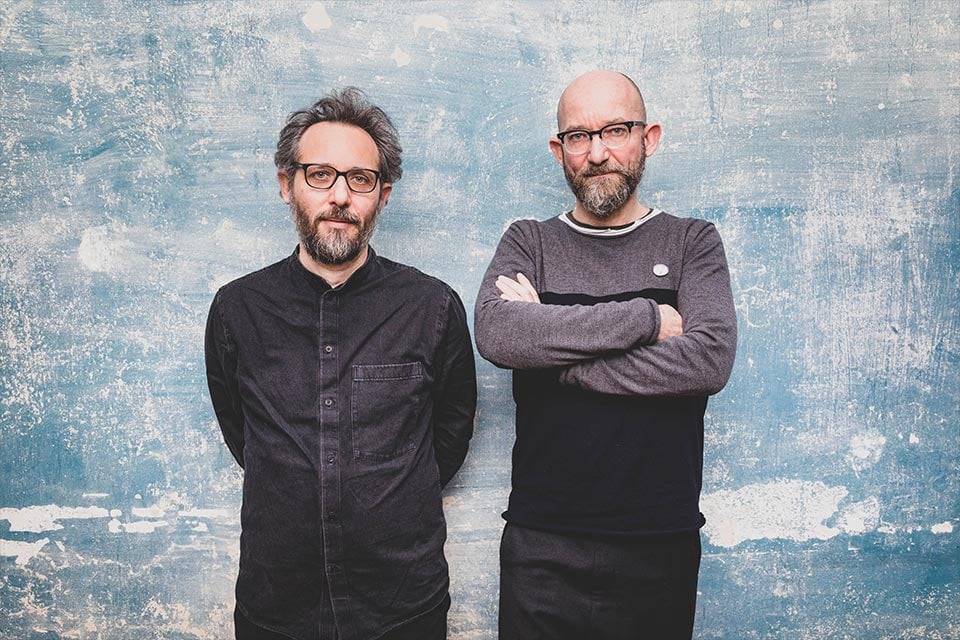Founded in 2005 by Luca Baldini (architect) and Marco Baldini (designer), the Q-Bic Studio deals with architecture, but also with graphics, design, and the setting up of temporary spaces, right up to the direction of fashion and theatre events.
"We conceive design as an attitude to create a recognisable character at every level," they declare, which is why we chose to have a chat with Luca about the lighting sector. The Architect shared his vision of light, unveiled some good practices and tried to identify some product trends.
The importance of lighting in defining a space
How important is lighting in the definition of a space, be it public or private, and how do you approach a lighting project?
"I am not a lighting designer, I’m an architect. I have been following public and private projects for many years, and I work a lot with interior design and also with large buildings. Right now, for example, with my Q-Bic Studio we are following the recovery and reconversion of the Manifattura Tabacchi in Florence. Clearly my work cannot disregard lighting, as it is one of the elements that can most define the character of a space, that can suggest its reading and interpretation by those who live in it. In my opinion there are no universally applicable and always valid rules; I cannot give 'recipes' on lighting. It should be assessed from time to time through a preliminary analysis and evaluation of different ideas to find the right balance. Light is a tool for creating atmosphere and catalysing attention, it can generate feelings of warmth or coldness, to be calibrated based on the location. I never start with schemes that I have to implement, I have no preconceptions or fixed points. Then there is personal taste; for example, I don't like environments where the light is uniformly diffuse, flat. I prefer accents, areas of shadow contrasted with more highlighted details.

Tricks and best practices for optimal lighting design
Are there any tricks or good practices to achieve an optimal result, one that corresponds to the characteristics of the site and its intended use?
"When choosing, one must consider that so-called 'decorative' lighting fixtures are both technical elements and pieces of furniture. They are present even when they are off, they enrich and fill places with their shapes, colours and materials, so it is important to evaluate these aspects too. However, I would go so far as to say that decorative lamps often do not perform very well from a lighting point of view and are not sufficient on their own, we need spots and spotlights - preferably concealed - to support them in order to achieve the right values in space and on the planes.
The most satisfying lighting design project
In your interiors portfolio, are there any projects that you consider particularly successful from a lighting point of view, and why?
"There is one venue that perhaps reflects mine and my Studio’s vision when it comes to light in public spaces, more than others, La Ménagère, in the heart of Florence historic centre, which we completed a few years ago in collaboration with Karman. For the occasion, we decided to embrace that company and, with the exception of a few necessary support spots as explained earlier, the products all belong to the brand's catalogue. We were impressed by the breadth of the offerings, in a bar-bistro with a sales corner of over 1,000 square metres we needed to create different atmospheres. We fished out different solutions in terms of materials - plaster, concrete, metal, fabric - very varied in design and style but, at the same time, with a common matrix that made them approachable. I would almost say a consistency in diversity, a remarkable strength that made us choose Karman for temporary installations as well. A couple of years ago we did the styling for a gala dinner inside an unrecovered part of the former Manifattura Tabacchi, a huge shed with a communal table in the middle emphasised by lamps which, with their strong scenic presence, created a scenic effect that I would say was almost magical.



The evolution of the lighting concept over the last 10-20 years
In your experience, how has the concept of lighting evolved over the last 10-20 years? What has contributed most to this evolution?
"Certainly the advent of LEDs represented a revolution, a huge leap in technology that was, however, gradual. As soon as they came onto the market, LEDs emitted a very cold light and were only applied on technical solutions. Over the years, they have evolved and spread everywhere, eventually 'conquering' interior design lamps. Then, in recent years there has been a general openness to influences from other cultures, even those distant in space and symbolism, and local traditions have often hybridised and evolved into something new and completely unprecedented. This occurred even in the lighting field'.



2023 lighting trends
Speaking of product, what do you think are the latest trends (formal, object approach, use of materials) in lighting?
"We are in a historical period in which, on the one hand, there is a desire to experiment with new and unprecedented forms, which today can be designed with precision thanks to 3D software, testing their feasibility even before the prototype is made. On the diametrically opposite front, there is a widespread and great return to the noble materials used in the past. Whereas in the 1980s and 1990s, they were sidelined in favour of plastics and synthetic polymers, today glass, brass and wood are making a comeback. These classic solutions that can be reinterpreted in a contemporary key without losing authenticity, and are always original and amazing despite being well known'.




